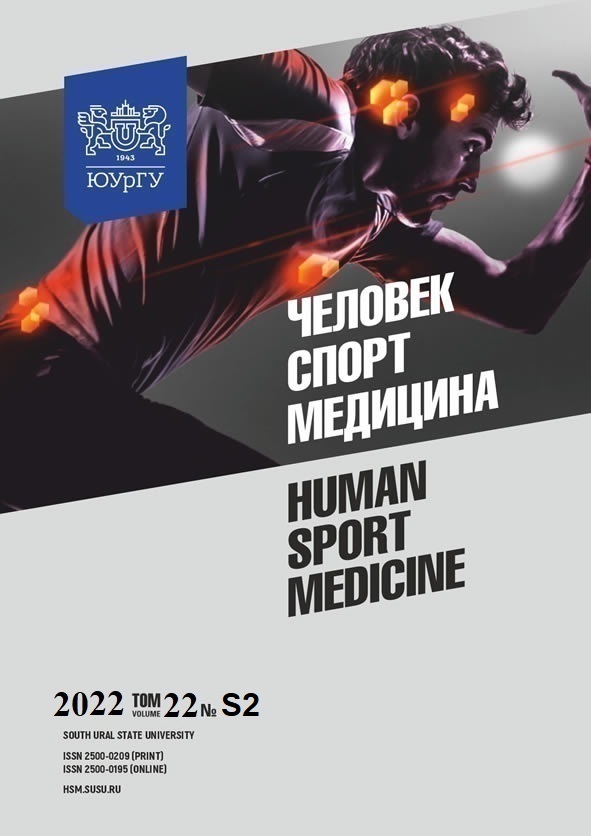FEATURES OF EXTERNAL RESPIRATION AND THERMAL PROFILE OF MAGADAN CROSS-COUNTRY SKIERS
Abstract
Aim. The research was performed to identify the physiological mechanisms of external respiration and thermal profile of Magadan cross-country skiers. Materials and methods. The study involved 10 cross-country skiers of I sports category aged from 17 to 21 years (E. Vyalbe School) and 455 young males with usual regime of physical activity (control group). Volume and volume-speed parameters of the respiratory system were recorded during involuntary and forced breathing (KM-AR-01 “Diamant-S” spiroanalyzer). The FLIR SC620 thermal camera (Sweden) with an uncooled microbolometer was used to obtain thermal images of eight zones in the front and back sides of the body in a standing position. Then, the average temperatures of each zone were analyzed. Statistical data processing was performed using the Statistica 7.0 package. Results. A significant increase in lung volume in young male skiers was revealed with decreased patency of large bronchi and a simultaneous increase in the caliber of small bronchioles. At the same time, these individuals showed higher average temperatures of the thermal profile compared to young males from the baseline group. Conclusion. The detected changes in the respiratory system of young skiers indicate a decrease in heat loss during breathing with the increased amount of functioning alveoli, which allows for more efficient oxygen supply. The revealed changes in the morphology of skin temperature during cross-country skiing indicate a redistribution of peripheral blood flow that is aimed, inter alia, at preventing cold injuries and maintaining energy reserves of the body.
References
References on translit
Copyright (c) 2022 Human. Sport. Medicine

This work is licensed under a Creative Commons Attribution-NonCommercial-NoDerivatives 4.0 International License.















